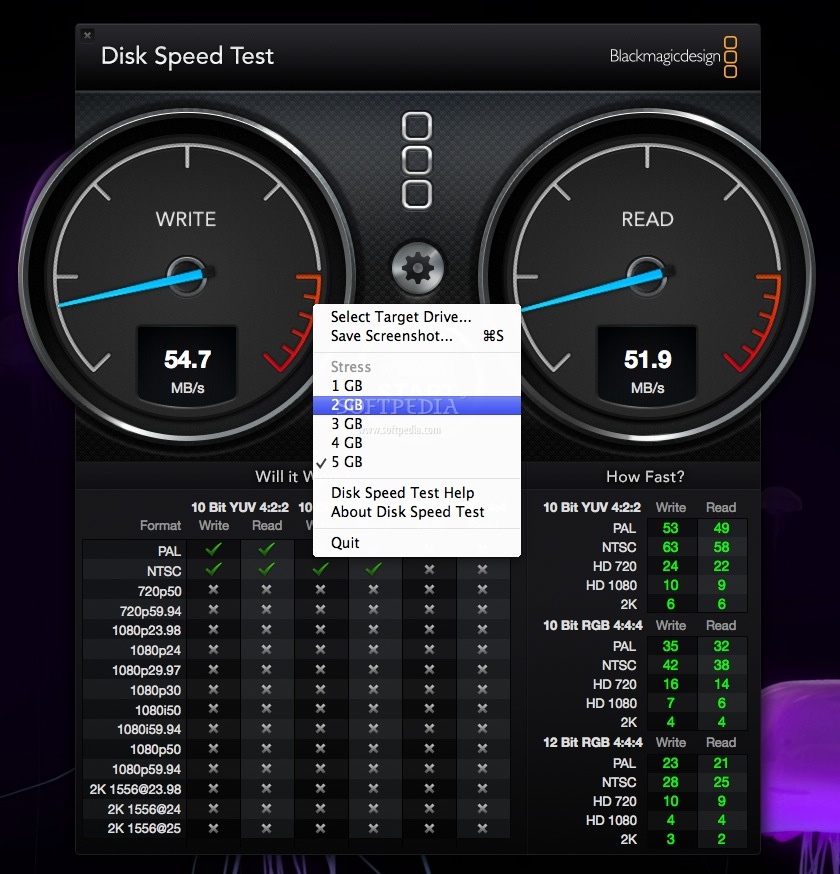

Incidentally, if I you are in the market for a new iMac try to rustle up the extra cash for the SSD, either alone or in tandem with the mechanical HDD. It does have the advantage that you can keep the drive for alternative use after the iMac is sold. The LaCie, on the other hand, offers a hassle-free alternative, particularly since getting inside the iMac is not for the faint hearted. Replacing the HDD with a 256GB SSD would be even cheaper because it doesn’t involve adding the necessary bracket to accommodate a second drive. I have no doubt that installing a 256GB SSD into the iMac, in addition to the 1TB hard-disk, would be a cheaper option, even taking labour into account. That said, it’s a small price to pay for the blistering improvement in performance. I have positioned the drive as far away from the computer as the Thunderbolt cable will allow, but the fan noise is still intrusive. The iMac is now flying along and the LaCie is performing perfectly, although the internal fan is very noisy. The real speed could be even higher than 490 Mbps for all I know. Actually, the 490 is right off the scale at the end of the red zone on the BlackMagic disk speed test. After installing the Lacie these speeds have increased to 490/253 Mbps. Before adding the LaCie, the iMac’s 7,200 rpm drive was recording slothful read/write speeds of 48 and 49 Mbps. The statistics are nothing short of astounding. Programs launch with only one icon bounce, when ten was the previous norm. It boots quicker than the MacBook Air, wakes from sleep within a couple of seconds. My once lethargic iMac has been totally transformed. Installing the Little Big Disk and making it into the default boot drive took a couple of hours and was super easy. Yesterday I bit the bullet and bought the drive (plus one of Apple’s expensive £39 Thunderbolt cables). We’re at the (cash) bleeding edge of technology here, I am afraid. I did check around but couldn’t find it anywhere else, let alone cheaper. It isn’t a cheap one, though, because the 240GB LaCie (which actually consists of two striped 120GB drives in a neat casing) sells in the Apple Store for £699. It is now a viable option.Īfter rummaging around other users’ experiences I became convinced it would be a feasible option. But Thunderbolt and SSDs have changed all that. In the days of mechanical drives and USB connections, this was undoubtedly prudent advice. It is received wisdom that an external drive should never be used as a boot drive except in emergency. I reasoned that the speed of the Thunderbolt connection could make the LaCie into a viable boot drive. I started to look for an alternative solution and eventually hit on LaCie’s pricey but well-received Little Big Disk external Thunderbolt SSD.

Partly out of inertia and largely because I didn’t want to lose the iMac for even a week, I did nothing. Having watched two Asian enthusiasts wresting with an iMac in the above YouTube clip, I was more than ever convinced this is not for me. There is also the iFixit kit which was highlighted a couple of weeks ago, but a DIY jobs is well outside my modest capabilities. As we all know, Apple will not do this, but I found a couple of companies that said they could. I investigated the options for retro-fitting an SSD alongside the standard 1TB. Disk access speeds are abysmal (in comparison) and starting or restarting from sleep takes far too long. For the past ten months the iMac has been nothing but frustration when compared with my lowly late-2010 11in MacBook Air. To ensure speed I chose the fastest i7, the 3.4GHz, processor and 8 GB of RAM. When I discovered there would be a six-week delay, I decided to delete the SSD and, instead, go for the 7,200 rpm 1TB hard disk. Because of my positive experience with solid-state drives (on two MacBook Airs and a MacBook Pro) I ticked the box for the expensive dual-disk option, including a 256GB SSD boot drive. Last May I bought a new 27in iMac as soon as it was announced. If you like this article please see my follow-up in August 2012: The cheaper option


 0 kommentar(er)
0 kommentar(er)
